Beirute Explosion: Analysis of the impact on infrastructure
The devastading explosion that occured in Beirute on Tuesday, 4th of August, was something that no one could antecipate and take precautions. The consequences of that event are the elevated number of deaths and injured, around 100 people were killed and more than 4000 are injured. According to the existing information, the explosion was caused by a security problem in a ammonium nitrate’s warehouse. It’s an explosive substance that although it has an energy per Kg (heat detonation) inferior to the common TNT, in a warehouse with 2750 tons like in this situation, it can provoque an explosion like the one it happened.Of all the ammonium nitrate storage and like it is common to happen in these situations, it is expected that only 1/3 of its energy has been released in the explosion, loosing 2/3 for heat energy and fire, before and after the explosion. In order to analyze the impact of this explosion in the structure of the surrounding buildings, the explosive charge was converted to an equivalent TNT charge which results in around 320 tons of TNT.
During an explosion like this one, what happens is that a huge amount of heated gases is produced and expanded in the surrounding free space, leading to the creation of a shock wave that disseminates in all directions of the center surrounding sphere of the port of Beirute. This shock wave disseminates in a speed superior to the sound and that’s why in the videos we can observe of the tragedy, the sound is only listened after the impact on camera. This shock wave has two different phases. The first one is shock and pressure, where all the fragil materials are broken (e.g glass). The other phase is suction, where the materials are pushed in the direction of the center of the explosion. The second phase has a considerably lower intensity than the first one. However, a consequence of this second phase is the existance of glass from the buildings towards the center of the explosion. The first phase has a duration of only 1/3 of the second phase .
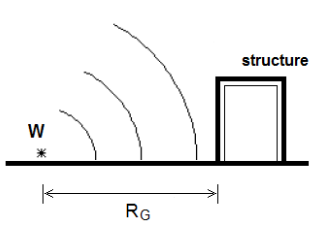
Source: European Union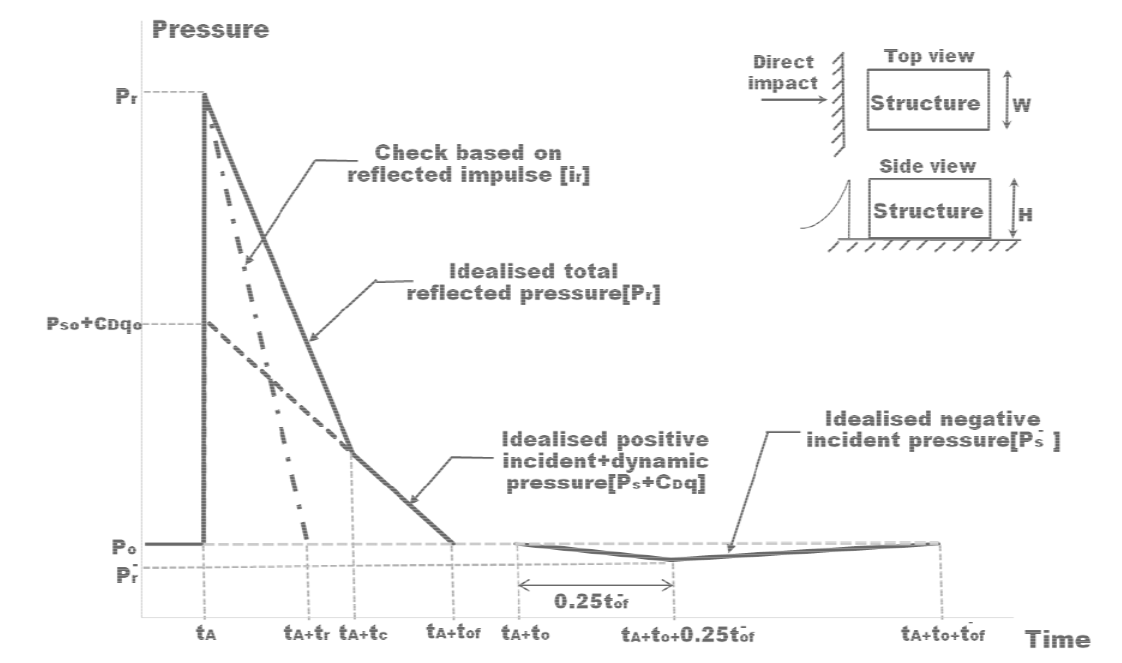
Source: European Union
Graphic where it's possible to see the multiple pressures in one structure in can of explosion if one wants to do the projection of the structure considering this scenario.
The explosion in Beirute ocorred in the port area but very close to an urban area. In this type of explosions the shock wave does not have a linear behavior and the existance of buildings or irregularities of the field makes it lose some of its energy. This fact reduces the shock wave but the shock wave reflection in the air particles significantly increases the impact of the wave, which can lead to an increase of 2 to 8 times the pressure on the surrounding buildings and structures. As it was possible to see in the shared images, the crater created by the explosion is also a zone of releasing energy.
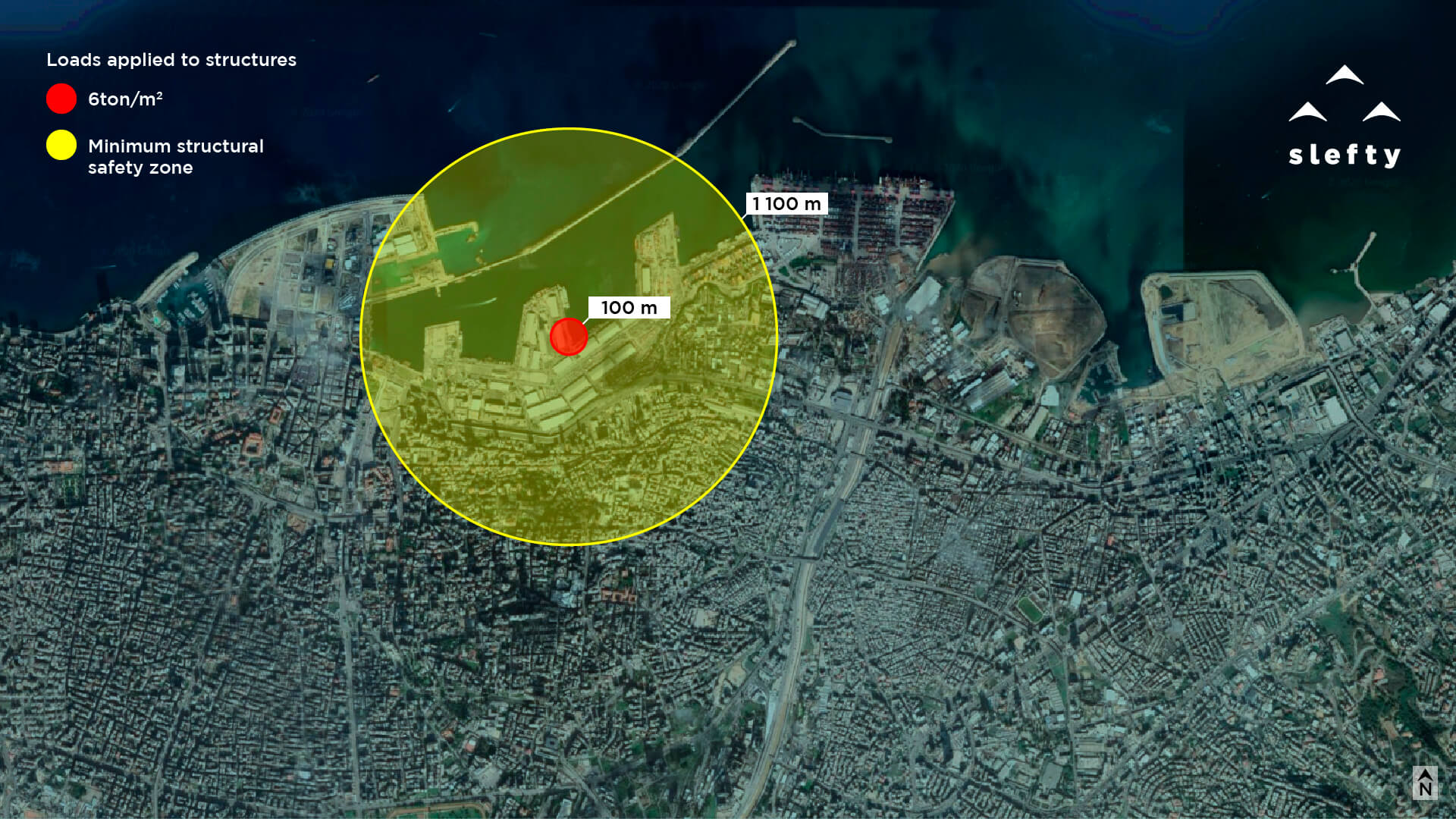
The impact on people and on the goals of this explosion is perfectly clear with all the images that have been broadcasted but the impact on buildings and infrastructures is not always easy to evaluate. The buildings usually have vibration frequencies quite superior to the time of the impact of the shock wave in each phase, usually around milliseconds. This implies that the buildings do not deform to the shock wave, and the deformation of stuctures is not considered in the analysis.
This Beirute explosion had a huge force of impact considering we are talking about something in the urban capital. The 320 tons of equivalent TNT and the spread of the wave in a sferic way caused the complete destruction of the areas close to the explosion, in the port area. As we step away from the explosion, the level of destruction decreases. In the Beirute case, the shock wave that was 10 meters away from the explosion, moved approximately 2,5m/ms, which implies that in a fraction of a second, the impact gets to whoever is on the 10 meters radar of the epicenter. As one can see in the shared images on the media, on the 10 meters radar from the epicenter, there’s no structure standing and that is why it’s easy to verify the devastating impact of the shock wave. The pressure in that zone, with durations below 3 milliseconds, was around 550ton/m2. However, considering the reflected pressure we can easily fo to 4500ton/m2. As one can see, for the magnitude size of the values, the structures are far away from being conceived for values closed to these ones and as a consequence, everything on the 10 meters radar from the center of the explosion is gone.
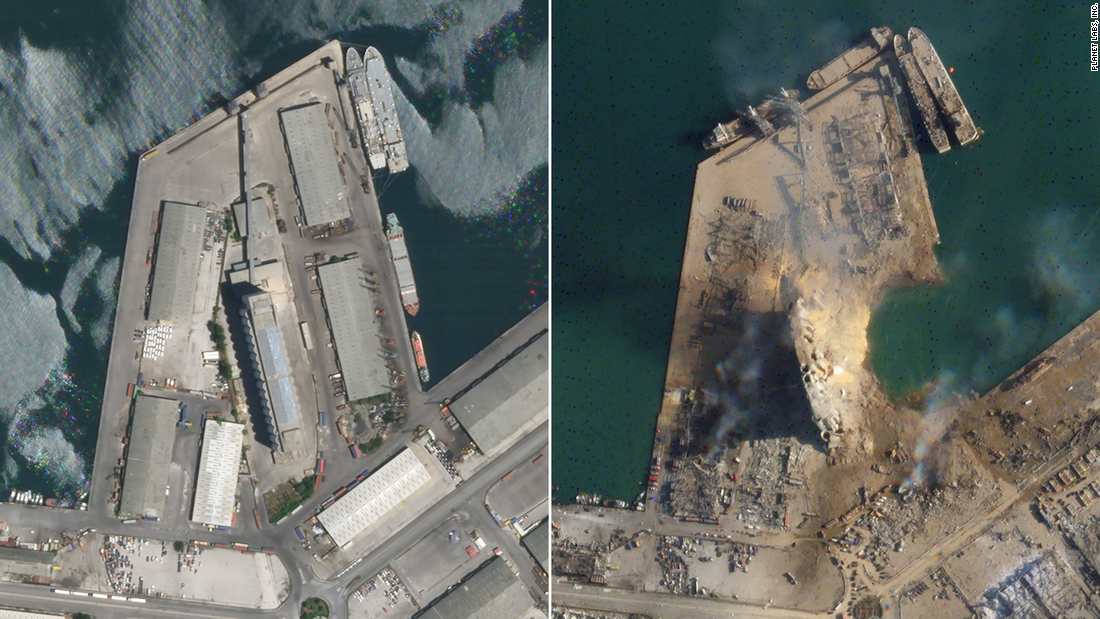
Source: CNN
From a 100 meters distance from the center of the explosion, the impacts are still very important. As it is possible to see from the shared images, there are very few structures standing inside this area and the ones standing show a significant level of destruction. In this area, the shock wave was spread on a much slower speed, around 0,40m/ms. The incident pressure provoqued by the shock wave had values close to 5 ton/m2 and the reflected pressure might have been close to 14ton/m2.
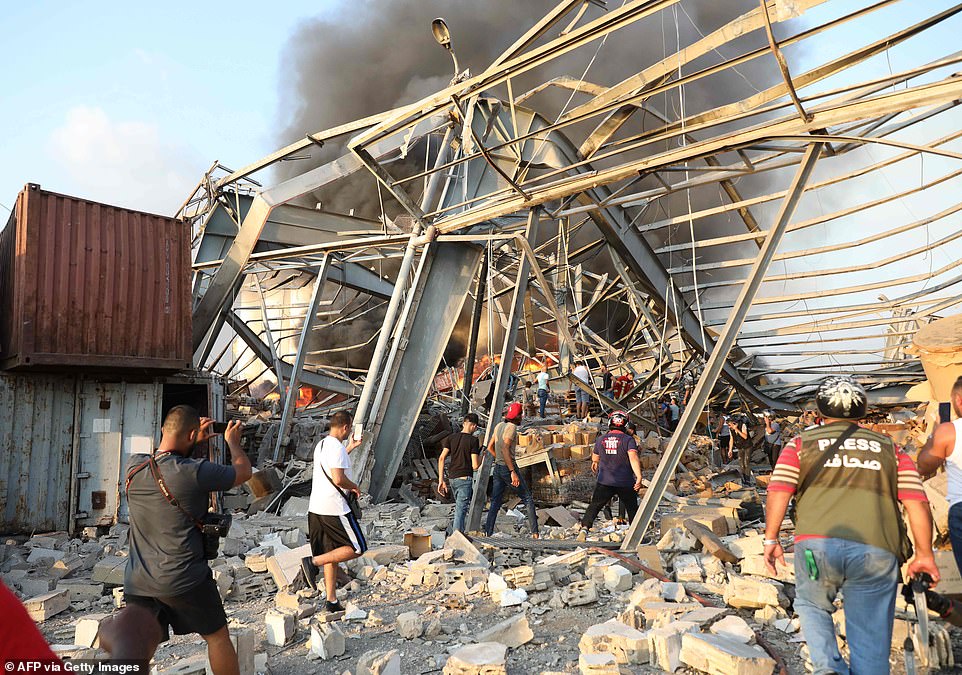
Source: Dailymail by Gettyimages
The values showed above are super high for the size of magnitude, for example the actions of the wind, for which the buiding are projected, the values can reach 0,3 ton/m2. If the Beirute buildings, on the perimeter at 10m and 100m from the epicenter of the explosion, were projected to an explosion like this one, it would be necessary to analyze the horizontal charges superior to 1850 ton/m2 and 6ton/m2 respectively for each perimeter. This is not economically viable and so it’s necessary to define security areas around the places with a risk of explosion which was not the case of Beirute. In order for the pressure of the shock wave not to overcome the pressure of the wind, for which the buildings are projected, we have to get away from the epicenter between 1,1km and 1,5km.
It’s simple to verify, based on the data shown, that exists a danger that most structures that are placed on a 1,5km radar of the Beirute explosion have security issues. Aiming for a quick turning point and so that the city can go back to normal, it will be necessary a quick security analysis in that area.
Slefty, with its experience in this area, has the perfect conditions to help Libano and the city of Beirute on going back to normal.


